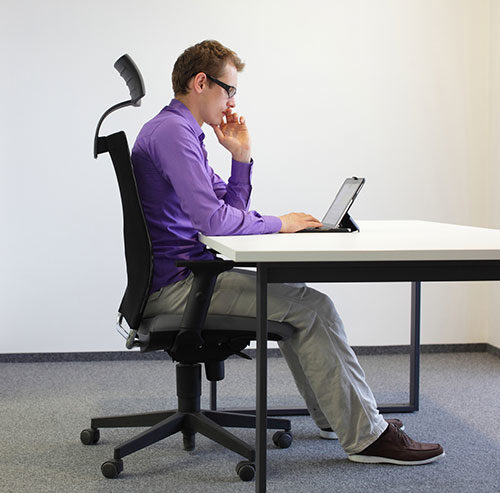Selecting an ergonomic chair for your workspace

Consider your work chair. Is it comfortable and supportive? Do you feel well-balanced sitting in it? Is it stable?
If you answered “no” to any of these questions, you might need a new chair – one that is ergonomically correct. But it’s important for your employer and you to do the research first. “There are many ergonomic chairs available, but it can be a mistake to purchase one simply because it is labeled ‘ergonomic,’” the Canadian Center for Occupational Health and Safety cautions.
Some chairs may be too high or the arms may be too far apart for a particular person. “A chair becomes ergonomic only when it specifically suits a worker’s size (body dimensions), his or her particular workstation, and the tasks that must be performed there,” CCOHS states.
What makes a chair ‘good’?
A number of factors go into making a chair ergonomic. CCOHS recommends checking the following items on the chair:
- Is the seat height adjustable? Can it be adjusted to the height recommended for a worker?
- Is the backrest adjustable? It should be able to be adjusted both vertically and in frontward and backward directions. In addition, the chair should have a firm lumbar support.
- Does the chair have a seat depth appropriate for the worker?
- Is the chair stable? CCOHS advises purchasing a chair with a five-point base.
Getting it right
Because office workers sit for long periods of time, it’s important to have a good, supportive chair. Before purchasing a chair, CCOHS states that employers should consider these factors:
- Be aware that one chair won’t necessarily work for every worker.
- Know exactly how tall your workers are, as the optimal seat height is about one-quarter of the worker’s height. However, this is not a hard-and-fast rule because a worker’s torso-to-leg ratio can vary widely.
- No chair is perfect for every work activity.
- Keep maintenance and repair costs in mind, and check with the manufacturer to find out how often the chair should be inspected for potential issues.
Finally, make sure the chair works and is comfortable for the user. “It is especially useful to obtain several sample chairs for a trial comparison by those who will be using them,” CCOHS recommends.
Post a comment to this article
Safety+Health welcomes comments that promote respectful dialogue. Please stay on topic. Comments that contain personal attacks, profanity or abusive language – or those aggressively promoting products or services – will be removed. We reserve the right to determine which comments violate our comment policy. (Anonymous comments are welcome; merely skip the “name” field in the comment box. An email address is required but will not be included with your comment.)

